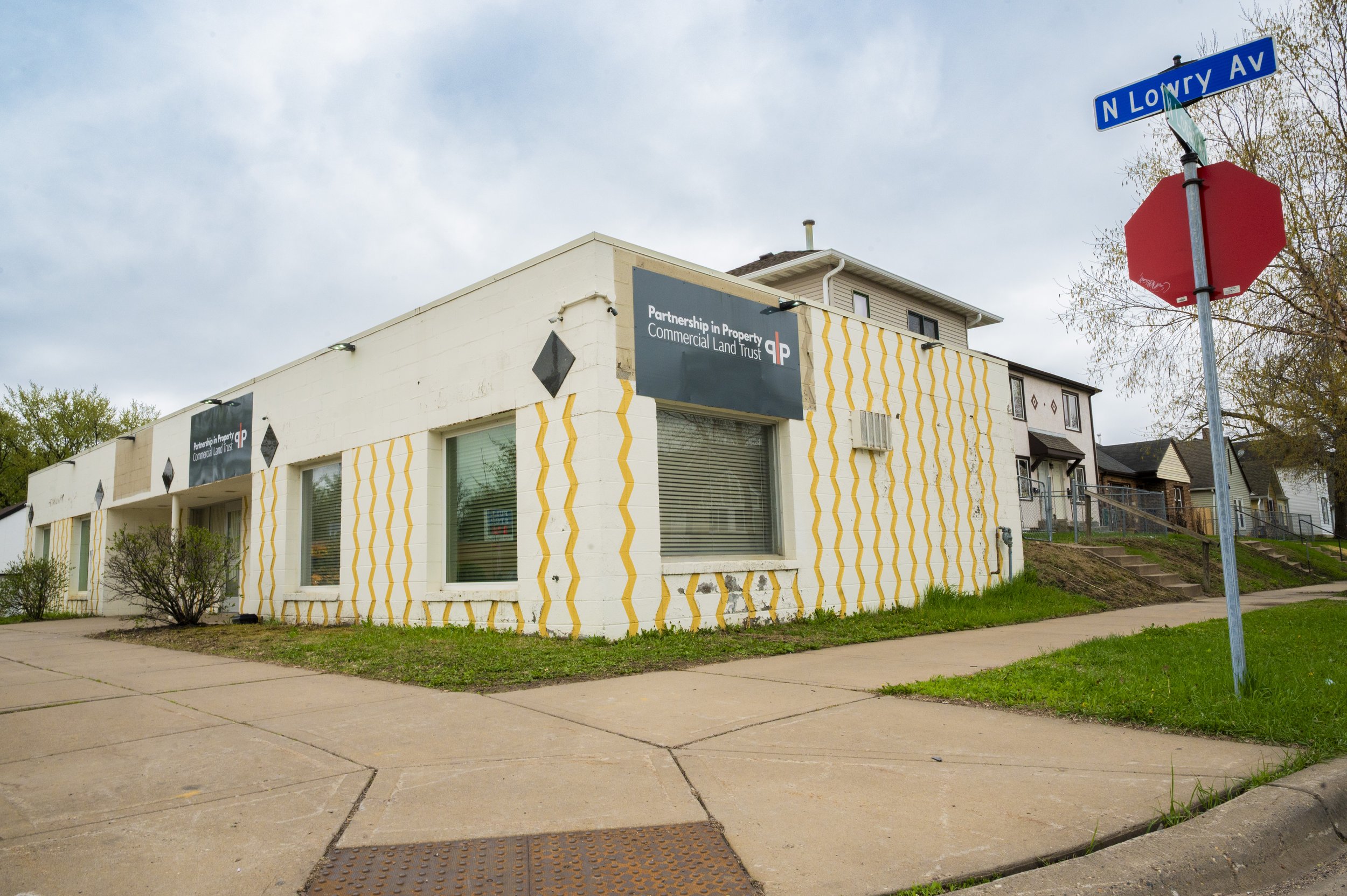The Rise of Commercial Land Trusts Combating Economic Inequality
Written By: Christopher E. Williams
Commercial real estate often feels like an extremely large and expensive endeavor, one that small business owners feel understandably intimidated by. These same small business owners are frequently pushed out of their storefronts due to rising rent prices, a core symptom of gentrification at work. For Black people, Indigenous people, and People of Color at large, this process of being pushed out is nothing new and is, in fact, fundamental to white wealth building and hoarding. Still, history has shown that there are communal solutions to problems like these.
A LEGACY OF ECONOMIC EMPOWERMENT
In 1969, Black activists and freedom fighters used knowledge gained from global indigenous people and repurposed it to abide by U.S. law calling it Community Land Trusts. Many have heard of Community Land Trusts today and are known for housing countless residents who would otherwise be unable to afford a home butCommunity Land Trusts didn’t start as only a residential project, the first Community Land Trusts adopted commercial elements to gain a stronger economic standing in the wake of racial discrimination and private business retaliation: New Communities Inc. was the first named Community Land Trust, a 5,700 acre land trust and farm collective built to house and employ Black sharecroppers in Lee County, GA who lost their housing and jobs in retaliation for voting.
New Communities Inc. provided land for not only the sharecroppers to live on but also build businesses on, selling their produce and products made on the land without risk of eviction nor termination. Under today’s ever-rising commercial real estate rents and small businesses, particularly owned by Black, Indigenous, and People of Color (BIPOC), this model is exactly what inspired Commercial Community Land Trusts, or simply, Commercial Land Trusts. As of 2022, the Institute on Race, Power and Political Economy reported that the homeownership rate was 45% for Black households and 48% for Latiné identified households, compared to 75% for white non- Latiné households. According to a Brookings report, only 3% of Black households own commercial real estate in comparison to 8% of white households with much smaller holdings valued at just $3,600 on average while white households are at nearly $34,000. Simply put, BIPOC business owners are being economically destabilized and priced out.
COMMERCIAL COMMUNITY LAND TRUSTS LEADING BY EXAMPLE
Successful Commercial Community Land Trusts are all over the country today. Boston's Dudley Street Neighborhood Initiative (DSNI) started as a Community Land Trust based in affordable housing and cultural preservation but with the creation of their Dudley Neighbors Inc., they are an even stronger economic support system for the predominately Latiné and Black members of the Dudley Street community. The Commercial-Community Land Trust owns more than 30 acres of land with 227 units of affordable housing where half of all DNI homeowners earn roughly $20,000 to $40,000 each year, an urban farm, a greenhouse, parks, and commercial buildings which has enabled local entrepreneurs to own their businesses without the fear of displacement while also leading to more job creation, local wealth-building, and overall community empowerment.
Commercial development within Community Land Trusts are growing due to success stories like Anchorage Community Land Trust (ACLT), which, like all Community Land Trusts, began with focusing on affordable housing, investing over $16 million in residential properties and has since expanded. ACLT has opened more than 25 brick and mortar businesses with affordable leases, investing over $53 million in commercial properties while also providing support for over 500 small businesses within their local community.
Examples of Commercial Land Trusts are on the rise although Community Land Trusts continue to be the standard model across the globe. Many existing Community Land Trusts are planning and proving commercial opportunities much like the standard New Communities Inc. intended to set. To keep an eye on these organizations, the International Center for Community Land Trusts has a directory for public use.
INSPIRING CIVIC ALLIES
Community Land Trusts have become commonplace since their inception and have proven to be successful around the world but to continue their positive results and evolve to more communal commercial usage, cities will have to support their emergence and development. Municipal assistance has made it easier for Community Land Trusts to operate within residential areas. For example, Jurisdictions can require affirmative marketing. For example, San Francisco’s Mayor’s Office of Housing and Community Development (MOHCD) and New York City Department of Housing Preservation and Development (HPD) requires affordable housing developers to implement targeted outreach efforts for BIPOC and low-income communities to ensure Community Land Trusts are promoted as equitable access to housing opportunities.
These efforts in San Francisco and New York don’t directly result in the success of Commercial Land Trust development but provide a sturdy relationship between cities and nonprofits looking to continue their missions in the commercial space. With the support of cities, partnerships with other commercial entities, communal coalition building, and direct teamwork with funders, Commercial Land Trusts are primed for longevity and success.
PROSPERITY IN PARTNERSHIP, PARTNERSHIP IN PROPERTY
A Commercial Land Trust in Minneapolis, Partnership In Property Commercial Land Trust (PIPCLT) holds the mission to provide BIPOC entrepreneurs in the community with the tools and resources they need to secure affordable, long-term commercial spaces. PIPCLT provides education, consulting, and advocacy while working to build a more equitable and sustainable future for entrepreneurs who face the dual challenges of extreme property prices and historical economic disparities.
PIPCLT’s model offers a tried-and-true solution to the challenges of displacement and economic inequality taking inspiration from Black activists’ historical strategies and the contemporary work of preservationist and financial activists of today. Providing small businesses with the stability of community-owned land ensures that BIPOC business owners can thrive, create wealth, and build intergenerational success by helping build stronger, more resilient communities where economic equity is the norm, not the exception.
THE BREAKDOWN
Commercial land trusts are a lifeline for small businesses, particularly those owned by BIPOC individuals, in a rapidly more inequitable economic landscape. As gentrification and rising property prices continue to threaten these businesses, Commercial Land Trusts like PIPCLT provide a critical solution to ensure that small businesses can stay rooted in their communities, thrive, and contribute to local economic growth.
Everyone has a role in supporting Commercial Land Trusts and stabilizing BIPOC communities whether community members and leaders, policymakers, developers, and funders. By working together, we can create a future where economic equity is accessible to all, and small businesses can flourish without fear of displacement from major corporations.
You can learn more about how PIPCLT is making a difference and how you can get involved by visiting https://www.pipclt.org/donate.
ABOUT THE WRITER
Christopher E. Williams is the co-founder and co-executive director of COWRIE (Cooperative Wealth, Reinvestment, and Empowerment), home of BankBlackUSA, alumni of the Just Economy Institute Fellowship, and certified in the Trauma of Money coaching method. Williams’ work focused on the historical and social relationship to wealth and Black communities in the U.S Williams is based in Atlanta, GA, and uses any pronouns said with respect.


